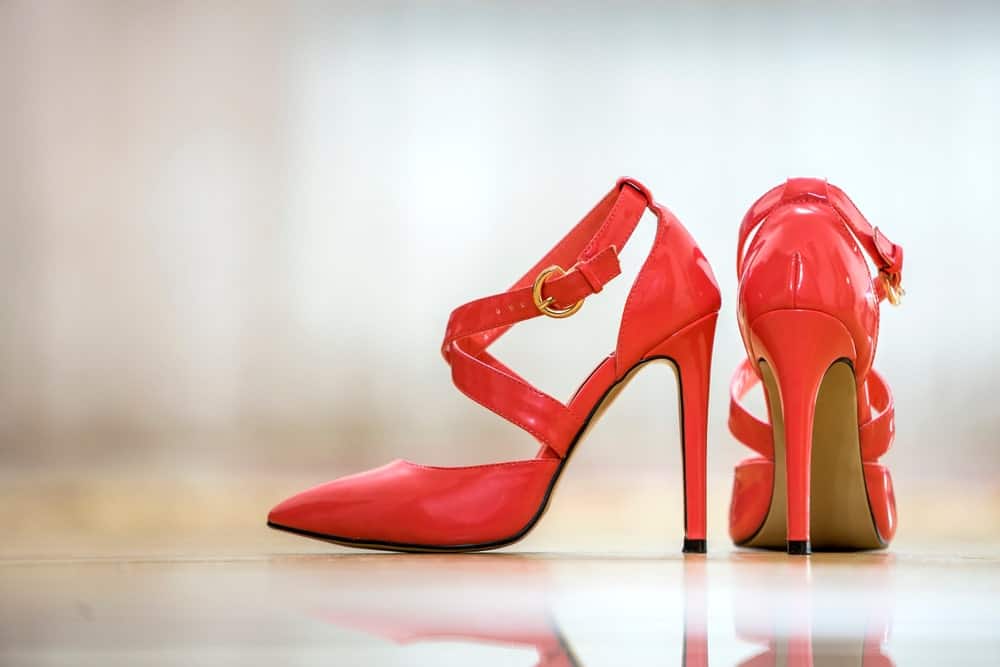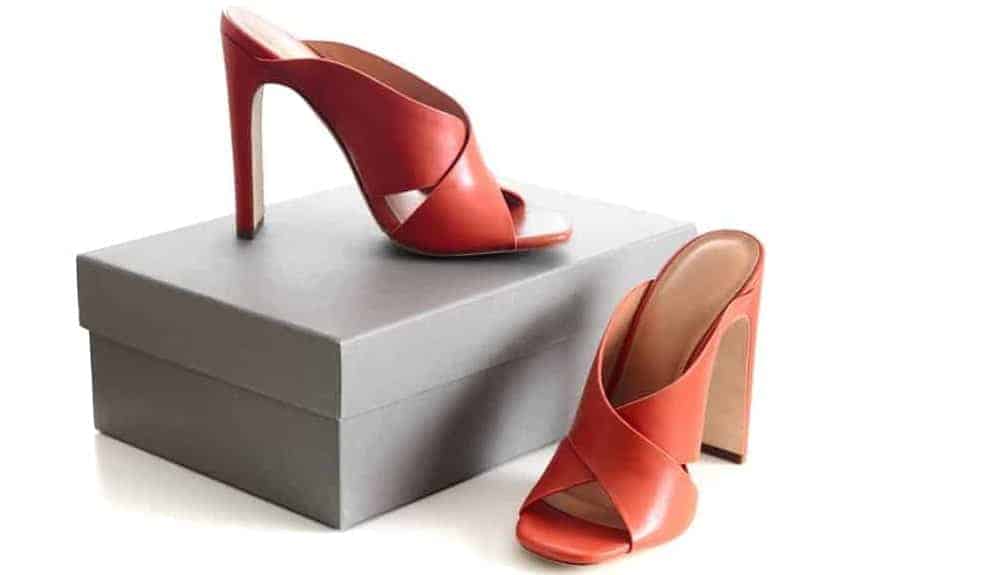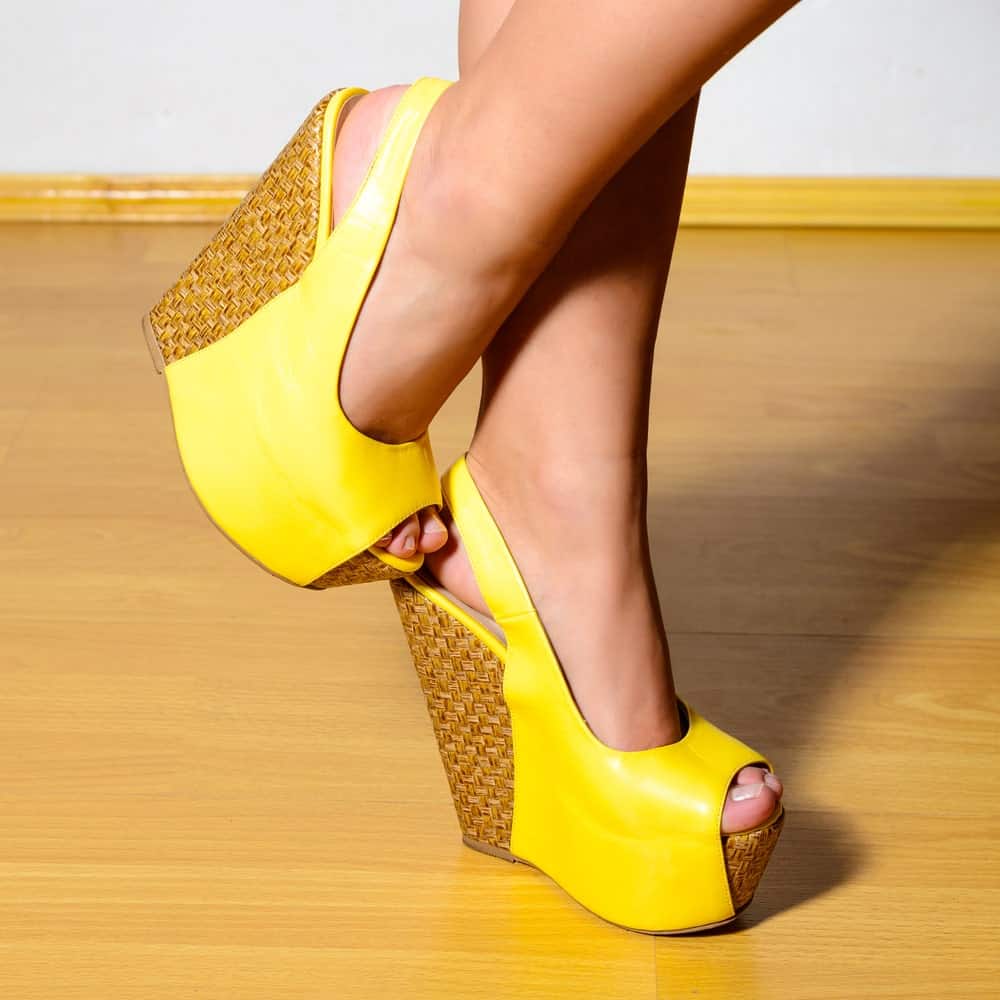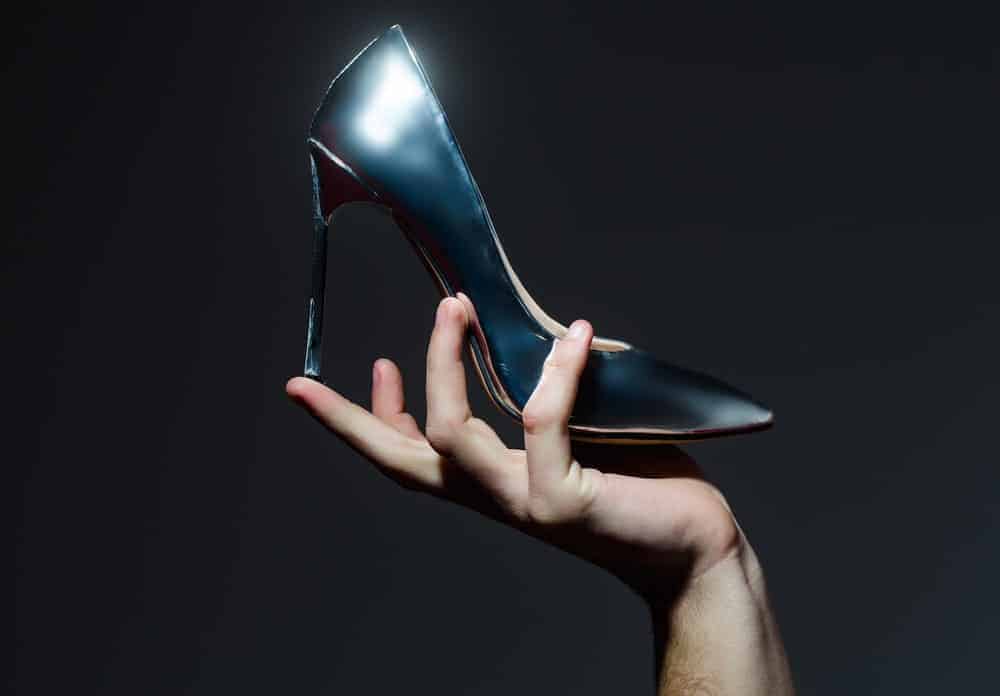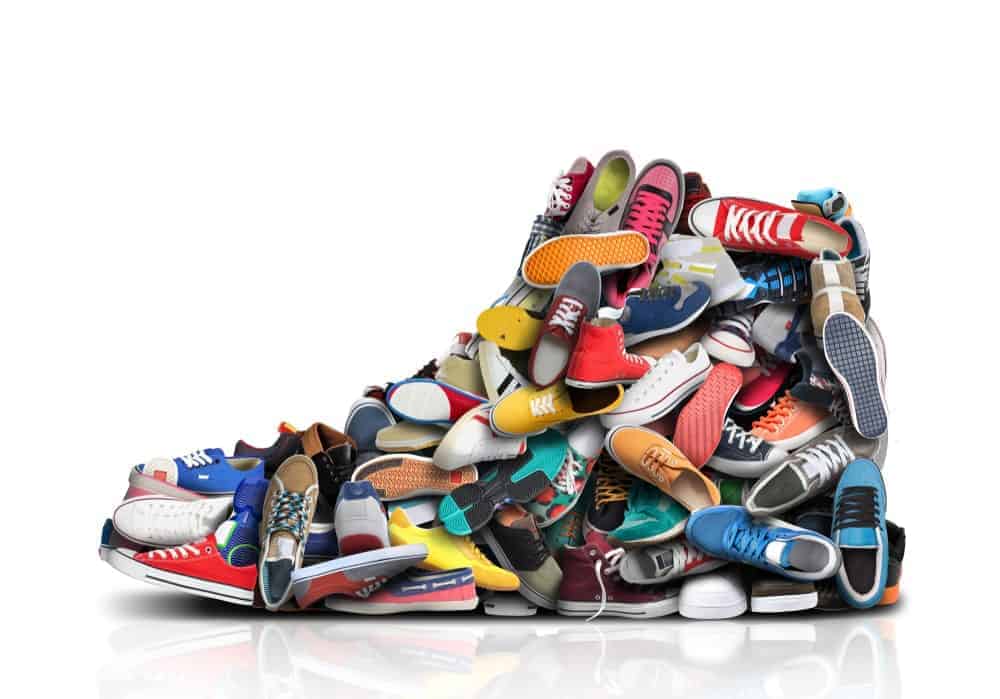There's a right pair of heels for every feet type, style preference, and occasion so discover them here by exploring the different types of shoe heels for every woman.
Understanding the various types of shoe heels can empower any woman to take charge of her personal wardrobe. Shoe heels come in a wide range of styles that reflect their intricate history and evolution. In fact, prior to epitomizing womanhood and femininity, heels began as functional footwear for men.
Persian soldiers first popularized the raised shoe heel to better grip horse stirrups during warfare. As early as the 10th century, shoe heels enabled horsemen to grip their saddles easier. Persian cavaliers wore inch-high heels as they rode into battle, and the well-heeled Shah Abbas I of Persia impressed European courtiers during his tour of Europe in the 16th century.
Since much of the world associated horse ownership with wealth, the heel became a quintessential symbol of the upper classes. As only the wealthy could afford to wear impractical shoes and not engage in manual labor, the heel also became a mark of male nobility.
For example, King Louis XIV immortalized the red heel as a symbol of imperial power in portraits, and some historians theorize that this is a reason red heels and soles remain a symbol of luxury through the modern era.
Notably, the added benefit of increased height caused the heel to transition from male to female footwear. In 1533, 14-year-old Catherine de Medici became the first woman to don heels in order to appear older during her wedding to the Duke of Orleans.
This trend-setting move made heels an instant hit among noblewomen through the remainder of the Renaissance era. Although the French Revolution halted the use of heels for a time, the invention of the camera propelled heels into popularity once more. Snapped photographs of heel-clad women demonstrated the effect shoe heels could have on elongating the appearance of legs and boosting overall attractiveness.
In the 20th century, shoes remained a great way to demonstrate status and personal taste. For example, Christian Dior introduced the stiletto heel to the couture scene in 1954. Shows like Sex and the City popularized designers such as Manolo Blahnik and Christian Louboutin.
Today, owning a range of heels remains a key symbol of wealth and prestige. For example, socialite and former first lady Imelda Marcos reportedly owns a collection of 3,000 heels. Whether you want to unleash your inner fashionista or need to update your wardrobe for the season, a look at the major types of shoe heels can help you establish a shoe closet fit for a queen.
Contents
- Heels by Design or Style
- Ankle Booties
- Ankle Strap Heels
- Ballroom Dance Heels
- Basic Pumps
- Block Heels
- Chunky Heels
- Comma Heels
- Cone Heels
- Corset Heels
- Cuban Heels
- Cut Out Heels
- Decorative Heels
- Espadrille Heels
- Fantasy Heels
- Flare Heels
- Flatform Heels
- French Heels
- High Heel Boots
- High Heel Sandals
- Kitten Heels
- Lace-Up Heels
- Mules
- Medium Heels
- Oxfords
- Peep Toe Heels
- Platform Heels
- Sculptural Heels
- Slim Heels
- Slingback Heels
- Spool Heels
- Stacked Heels
- Stiletto Heels
- T-Strap Heels
- Wedge Heels
- Wedge Sandals
- Heels by Material
Heels by Design or Style
Ankle Booties
These dainty heels stop just above the ankle, offering a great alternative to full-length boots. Ankle booties save closet space, bring more variety to your footwear, and offer a great middle-ground on cool or balmy days (during which a full-on winter boot would be overdoing it).
Ankle Strap Heels
As the name implies, ankle strap heels fasten around the ankle. Stylists rave that this distinct structure helps make the heels more secure, and enthusiasts ensure that the refined design upgrades any feminine silhouette. Enormously popular in the vintage era, ankle strap heels may also include a slingback strap for extra stability.
Ballroom Dance Heels
Ballroom dance heels can help you glide across the dance floor like a true danseuse. With its enclosed back and elaborate ankle straps, the ballroom heel provides the right amount of elegance and support for a range of rhythmic styles. The vertical structure of this shoe can support repeated lifts, dips, or sashaying for hours on end.
Basic Pumps
Source: Charles Keith
Many people refer to the basic pump as “the classic high heel”. In fact, most wardrobe stylists advise owning several pairs of basic pumps as outfit staples.
For example, solid-color pumps look appropriate in the office or matched with a pair of dark-wash jeans. Basic pumps are usually low-cut around the front area and measure only a few inches in height to enable easy access and wear.
Block Heels
Block heels feature a bold, solid black heel that makes a commanding fashion statement. The thickness and solidity of a block heel also help distribute the body’s weight more evenly (thereby removing some of the excess pressure from the front of your foot).
Whether you want to look the part of a woman in charge or need to stand for extended periods of time, block heels provide the stability needed for the job.
Chunky Heels
Featuring a wide, squarish silhouette, chunky heels offer a stable base for walking and dancing. Ranging in style from a solid color to eclectic, the chunky heel is a great match for casual or party dress styles. The increased surface area also makes it easier to stand in these heels for extended periods of time.
Comma Heels
Source: Yoins
Just as the name suggests, comma heels resemble the ubiquitous punctuation mark. The comma shape can face either direction to put an edgy spin on pumps or boots. Whether walking on carpet or cobblestone, the crescent shape of these heels remains suitable for any occasion.
Cone Heels
Source: ShopClues
Also known as a tapered heel, cone heels are wide near the sole and narrow down to a point near the base. The thick upper portion of the cone heel provides a sturdy foundation for your foot while its delicate tip brings grace and aplomb to your steps.
Corset Heels

Encase your feet in feminine beauty with corset heels. These heels feature two symmetrical sides that meet and lace together just like a traditional corset. You can use this heel as a statement piece or complement special occasions.
Cuban Heels

Display gorgeous androgynous style with Cuban heels. This type of footwear adds height to the same style of Cuban shoes found within fancy male attire. Reminiscent of a cross between an ankle boot and an oxford or loafer, this heel looks great in both casual and dress styles. Most designers prefer a heel that is darker than the upper portion and tapers near the base.
Cut Out Heels
Featuring a thick upper or frontal portion, these heels showcase elaborate shapes or designs cut out for decorative purposes. Because the cutouts come in a range of shapes, sizes, and colors, these heels allow you to transform your feet into a veritable work of art.
Decorative Heels
Ensure that everyone’s gaze follows you out of the room by wearing decorative heels. Every aspect of these heels demonstrates creative flair. Types of decorative styles include intricate jewels or nature-inspired designs resembling leaves of icicles. Popular for events such as weddings and awards ceremonies, these heels are an easy way to become the star of the show.
Espadrille Heels
Espadrille heels feature a fabric or canvas upper area with plaited soles made of fiber or esparto rope. As a descendant of the Spanish work shoe, the espadrille heel is a great match for casual activities and social settings.
Fantasy Heels
From fairy-tale inspired to sci-fi style, fantasy heels are the catch-all for finding a distinctive style that is all your own. Whether you need to create an authentic costume or put on the finishing touches for a night out of the town, browsing through a range of fantasy heels can help point you in the right direction.
Flare Heels
Source: New Look
Similar in appearance to “bell-bottoms” or flared jeans, this type of heel has a slim base that widens considerably toward the bottom. These heels match well with jeans as well as with a lively dress or skirt.
Flatform Heels

As the name implies, “flatform” heels feature a flat plateau from toe to back heel. The even distribution of weight can add a rugged or industrial look to any casual outfit, and these heels may also feel more comfortable for individuals with low arches or “flat” feet.
French Heels

Capture the appeal of couture in everyday life with French heels. Also known as Louis heels or Madame de Pompadour heels, these shoes resemble shoe heels in height and curvature. Because these heels are on the shorter side, they are appropriate for settings in which you have to stand more than usual. French heels often include a prominent buckle or bow, evoking instant Old-World charm.
High Heel Boots
High heels bring elegance to functional or fashion boots. This type of footwear is an excellent way to remain attractive during cold or rainy weather. Whether you want a more attractive winter pair or need to mix it up with a skirt or dress, high heel boots can bring a feminine touch to any occasion.
High Heel Sandals
High heel sandals feature a sandal-style toe area that contrasts with any style of a heel (kitten, stiletto, etc.) near the back of the foot. These heels bring a little more drama and personality to your everyday summer sandal.
Kitten Heels
These heels are feminine enough to make a fashion statement but allow you to avoid too much discomfort if you are going to be on your feet for a while. Kitten heels feature a thin, delicate stem and are always below three inches in height.
The femininity and practicality of kitten heels make them perfect for women who are taller in height but who do not want to give up heels completely. In addition, the short height makes these shoes perfect for teens still learning how to walk in heels.
Lace-Up Heels

Lace-up heels offer a great way to add character and personality to your wardrobe. Interestingly, fashion historians are divided on the origin of the lace-up heel. Some historians cite the classic ballerina slipper while other historians credit the gladiator sandal as footwear inspiration.
Regardless of the origin, you can easily find lace-up heels that resemble both styles. Choose ballerina-inspired heels to project an elegant and feminine tone, or strap into gladiator heels for a strong, sexy, and fierce evening look.
Mules
Mules are any type of heels in which to tongue of the shoe covers the top of the foot. Whether open or closed toe, these shoes are a great option for those who want to display the beautiful fabric or canvas of their footwear. Gorgeous in velvety textures Moroccan leather or suede, these shoes are also easy to slip on and off for convenient wear.
Medium Heels
As the quintessential office footwear, medium heels are among the most recommended types of shoe heels. Ranging between three or four inches tall, these heels are ideal wardrobe staples for women of average height. Perfect for practicing a strut or improving posture, these heels are still low enough to avoid any undue strain on the balls of your feet.
Oxfords

Imbue high-class beauty with oxford heels. A spin on the traditional Oxford loafer, these heels adds an academic touch to any wardrobe scheme. Regardless of whether you want to suggest sexy librarian or wealthy socialite, oxford heels are sharp accessories to keep in your stash.
Peep Toe Heels
Whether you want to show off beautifully pedicured toes or give yourself a little wriggle-room, peep-toe heels show just a hint of the foot’s frontal area. Some call the peephole a tease; others call it a sharp fashion statement. Regardless, peep-toe heels are the perfect way to give the phalanges a breather. These fashion-forward shoes complement everything from skinny jeans to A-line dresses.
Platform Heels
Platform heels feature a thick sole from heel to toe. This plateau adds dramatic height as well as comfort to hours-long wear. Platform heels are a great way to display your looks while dancing at the club or during a night on the town.
Sculptural Heels
Source: Farfetched
Sculptural heels are haute couture derivatives that emulate architectural designs. Whether you want to stand out from the crowd or own the latest from Alexander McQueen, these heels can offer the final step for creating an unforgettable wardrobe.
Slim Heels

Specifically designed for dressy occasions, slim heels lengthen the appearance of legs and support an upright posture.
Slingback Heels
This style features a strap that wraps around the back of the Achilles heel. The functional design helps women achieve a sophisticated, elegant appearance. Whether you want to elongate the appearance of your legs or showcase your fashion knowledge, slingback heels are great accessories to keep in your clothing arsenal.
Spool Heels

Spool heels resemble a cylindrical bundle of the thread. The heel of a spool-style shoe is thick near the foot, tapered in the middle, and then thicker again at the very base. Popularized during the Baroque and Rococo eras, this style is a simple way to add beauty and opulence to your look with minimal effort.
Stacked Heels

Stacked heels feature a secession of layers that bring depth and texture to footwear. Because a stacked structure can improve overall balance, these heels are an excellent way to secure your gait while walking on uneven ground.
Stiletto Heels
Named after Italian slang for a small dagger, these fashionable heels can reach up to eight inches high. Many stylists note that stilettos can have a slimming and lengthening effect on legs. Structurally, many stilettos may include a platform front to prevent breakage. Whether primping for a hot date or going dancing with friends, unleash your inner seductress with a sexy pair of stilettos.
T-Strap Heels
As the famous footwear of classic film stars and old-school pinups, T-strap heels are essential to creating a vintage silhouette. These heels feature a dainty T-shape that curves around the ankle, creating a simple charm that complements any outfit.
Wedge Heels
Wedge heels eliminate the separation between the tall heel and sole. These heels help evenly distribute your weight for more comfortable walking or standing, and they look great beneath both casual and cocktail dresses.
Wedge Sandals
Wedge sandals eliminate the separation between the tall heel and sole, and these shoes have an open upper area. This type of plateau adds more height to casual spring or summer footwear. Whether you want to create a more pleasant strolling experience or need to improve shorts or a summer dress, these wedge sandals are a perfect way to embrace warmer weather.
Heels by Material
Cork Heels

Like the material that seals a high-quality champagne bottle, the cork may be the secret to your best sartorial statement ever. Cork heels refer to the low-density, buoyant material used to make these shoes.
While some users favor the natural appearance of harvested cork, others value the material for the cushioned feel it gives underfoot. With cork heels, you can add variety to your wardrobe as well as an extra spring to your step.
Leather Heels

Valued for its luxurious texture and superior quality, leather is one of the oldest materials used to craft shoes. There are dozens of types of leather used to make shoes, including patent leather, Moroccan leather, Italian leather, pigskin, and suede.
Some shoes feature leather in their entirety while others include rubber soles for better stability and traction. If you enjoy the velvety feel but do not want a full-leather shoe, you can also find heels with leather inserts or simple leather finish.
Plastic Heels

As one of the most versatile substances on Earth, tough plastic is now one of the most popular materials for crafting heels. Types of plastic used for heels include hard PVC, polypropylene, and polyethylene. In addition to using plastic for stability, you can also find clear-plastic fashion heels — perfect in their resemblance to glass slippers!
Polyurethane (PU) Heels

Also known as “artificial leather,” polyurethane heels offer a vegan-friendly alternative to animal hide. These heels allow you to get a patent-leather look without the high price tag. In addition, many stylists note that polyurethane is easier to clean than genuine leather. As the same material used for everything from furniture upholstery to smartphone covers, polyurethane has the durability to ensure that your favorite shoes withstand wear and tear.
Rubber Heels

Offering a combination of traction and buoyancy, rubber has been a popular heel material for centuries. Because rubber remains stable against many types of footing, this material is popular for both sportswear and rainy weather. You can find high-quality rubber heels on rain boots as well as embedded within dress shoes.
Thermoplastic Rubber (TPR) Heels

These heels are made of a blend of copolymers that feel comfortable underfoot. Because thermoplastic is durable and recyclable, many environmentalists consider it one of the most responsible forms of footwear.
Wood Heels

While many people strictly associate wooden heels with traditional Dutch culture, wood is one of the most common materials for crafting shoe heels. Lightweight but durable, wood heels can provide stability for walking and serve as a safety reinforcement in work shoes. Ranging in options from poplar to cherry and walnut, wood heels can ensure attractive and secure structural support for most footwear.










